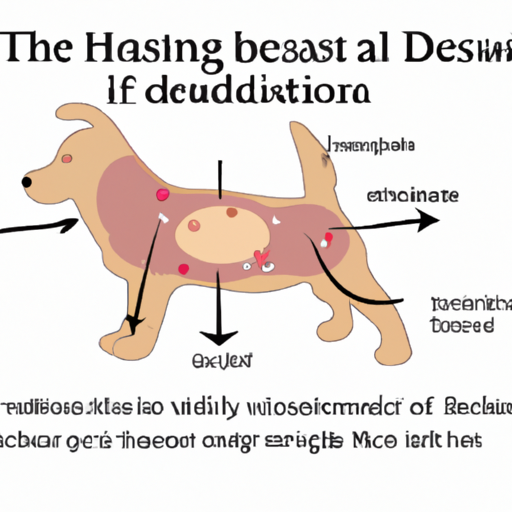Understanding Yeast Infections in Dogs
You might not realize it, but just like humans, dogs can also suffer from yeast infections. Yes, you heard it right! This is especially the case in dogs with floppy ears or those with a penchant for muddy puddles. To paint a clearer picture, yeast is a type of fungus that normally lives on your dog’s skin without causing any issues. However, when the yeast begins to grow out of control, it leads to an infection that can make your furry friend uncomfortable.
Reasons Behind Yeast Overgrowth
Yeast overgrowth in dogs can be triggered by a range of factors. Below are some of the common ones:
-
Allergies: Dogs that are prone to allergies, either food or environmental, are more likely to develop yeast infections. This is because the immune system’s response to these allergies can often alter the skin’s natural balance, allowing yeast to flourish.
-
Hormonal Imbalances: Just like humans, hormonal changes can wreak havoc on a dog’s body. Certain hormonal disorders, such as hypothyroidism and Cushing’s disease, can increase the likelihood of yeast infections.
-
Antibiotic Use: While antibiotics are essential in fighting off bacterial infections, they can also eliminate the beneficial bacteria that keep yeast growth in check.
| Common Triggers | Explanation |
|---|---|
| Allergies | Alters skin’s natural balance, enabling yeast to flourish |
| Hormonal Imbalances | Increases likelihood of yeast infections |
| Antibiotic Use | Kills beneficial bacteria that control yeast growth |
Spotting a Yeast Infection in Your Dog
Being a caring pet parent, it’s crucial that you recognize the signs of a yeast infection in your dog. The symptoms can vary, but some common indications include:
- Itchy or red skin
- Sores and darkened skin
- Bad smell
- Ear infections
- Changes in behavior (like excessive licking)
How to Prevent Yeast Infections
Preventing yeast infections in your dog involves maintaining a healthy lifestyle and regular check-ups. Here are some tips:
- Diet: Feeding your dog a balanced diet can boost their immune system and help prevent infections.
- Hygiene: Keeping your dog’s skin clean and dry is crucial in preventing yeast overgrowth.
- Veterinary Care: Regular vet visits can help detect early signs of yeast infections and prevent them from worsening.
FAQs
Q: Can a yeast infection in dogs be cured?
A: Yes, with proper treatment, a yeast infection in dogs can be cured.
Q: Are certain breeds more prone to yeast infections?
A: Yes, breeds with skin folds or floppy ears are more susceptible.
Q: How long does it take for a yeast infection to clear up in dogs?
A: With treatment, most infections clear up in 1-2 weeks.
Remember, as a caregiver, your role in maintaining your pet’s health is paramount. Understanding the causes and prevention of yeast infections can help keep your furry friend healthy and happy.



